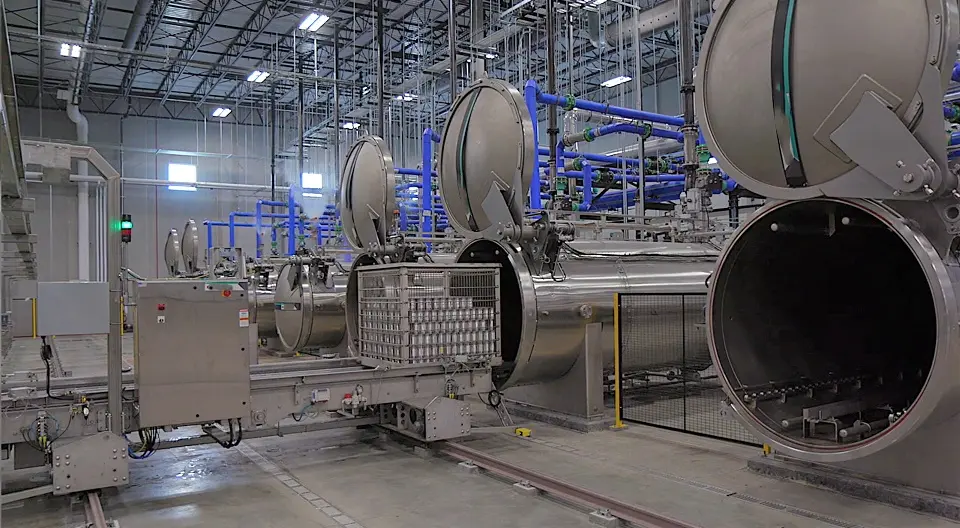
Comprehensive Solutions for Qualification and Validation in Retort Sterilization Retort sterilization is a fundamental process in the food processing industry,...
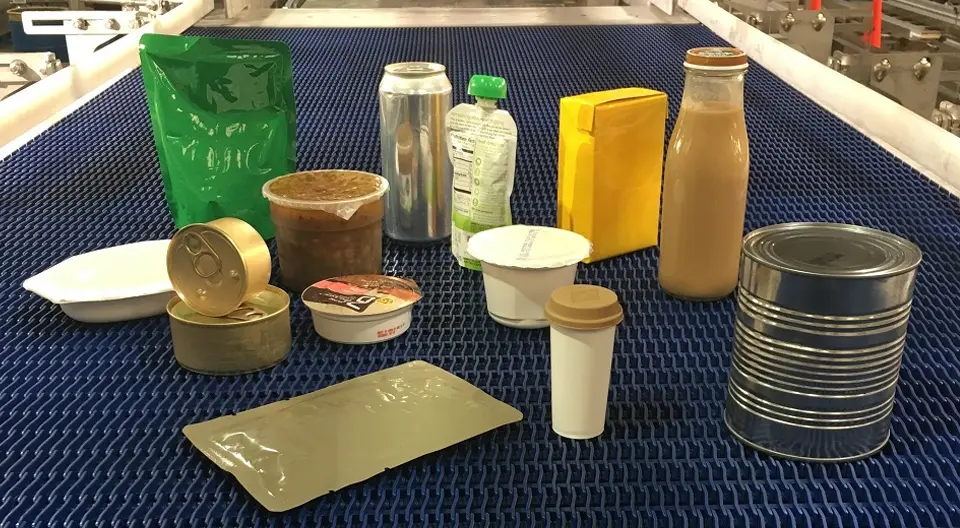
Retorting systems play a pivotal role in the food packaging industry, particularly when it comes to ensuring the safety and longevity of various food products. These systems utilize heat to sterilize containers filled with food, effectively killing pathogens and microorganisms that could compromise food safety. The process involves placing filled and sealed containers in an autoclave or a pressure cooker-like environment, where they are subjected to controlled temperatures and pressures. This critical step not only helps in maintaining the edibility of food but also significantly enhances its shelf stability.
As the demand for convenience and long shelf life increases among consumers, the evolution of retorting systems has become intertwined with packaging innovations. Modern retorting systems are engineered not only for efficiency but also for versatility, accommodating a wide array of container types and materials. From glass jars to metal cans and flexible pouches, these systems are designed to provide optimal sterilization without compromising the integrity of the packaging. Moreover, advancements in technology have led to more automated processes, allowing for accurate monitoring and control of temperature and time, thus ensuring consistent results.
Furthermore, the adoption of retorting systems is vital for extending the shelf life of food products, which contributes to reduced food waste and greater food availability. In today’s global market, where food products often travel long distances, utilizing effective retorting processes ensures that consumers receive safe, high-quality food. The importance of retorting systems cannot be understated, as they not only safeguard public health but also align with sustainable practices by maximizing the usable life of food products. Through these systems, manufacturers can deliver reliable and safe food options to consumers while adapting to ever-evolving packaging technologies.
Over the past two decades, the landscape of shelf-stable food packaging has undergone remarkable advancements. Traditionally, consumers relied on metal cans and glass jars to store and preserve food. These packaging types were effective in maintaining food safety and extending shelf life but had limitations in terms of weight, fragility, and recyclability. As the demand for convenience and sustainability grew, the food packaging industry began to innovate, leading to the emergence of modern packaging solutions.
The introduction of polymeric materials marked a significant turning point in shelf-stable packaging. These flexible materials proved to be lightweight and less prone to breakage compared to their metal and glass counterparts. Polymeric pouches, for example, offer an excellent barrier against oxygen and moisture, ensuring the freshness and longevity of food products. Additionally, these pouches can be designed in various shapes and sizes, catering to different consumer needs, and making them ideal for a vast range of food items.
Composite packaging has also gained attention as a viable solution for shelf-stable foods. These materials integrate the benefits of both rigid and flexible packaging, providing durability coupled with lightweight features. Composite bowls, cups, and trays are increasingly popular for ready-to-eat meals, offering not only functional advantages but also appealing aesthetics that attract consumers. The use of these innovative packaging options facilitates ease of storage and transportation while also maintaining food quality.
Furthermore, advancements in technology have led to improved manufacturing processes that enhance the sustainability of packaging materials. Many manufacturers are exploring biodegradable and recyclable options to minimize their environmental impact while ensuring that shelf-stable food products remain safe and appealing to consumers.
As the food industry continues to evolve, the push towards more innovative, sustainable, and consumer-friendly packaging solutions is likely to persist, shaping the future of shelf-stable food packaging.
In recent years, the food packaging industry has witnessed significant advancements in retorting technologies, largely driven by the need for enhanced food safety, quality preservation, and efficiency. Advanced retorting systems have emerged as sophisticated solutions to meet these evolving demands. Among these innovations are complex overpressure sterilizers, which play a crucial role in ensuring that packaged products are free from microbial contamination while retaining their nutritional and sensory properties.
Advancements in retorting technology have allowed for greater control over the sterilization process. By employing precise temperature profiles and monitoring systems, operators can ensure optimal conditions for each specific type of product being processed. This level of customization is particularly beneficial for manufacturers aiming to produce a diverse range of items, including sauces, soups, and ready-to-eat meals, all of which may require tailored processing parameters to preserve their unique qualities.
The various retort processing methods includes:
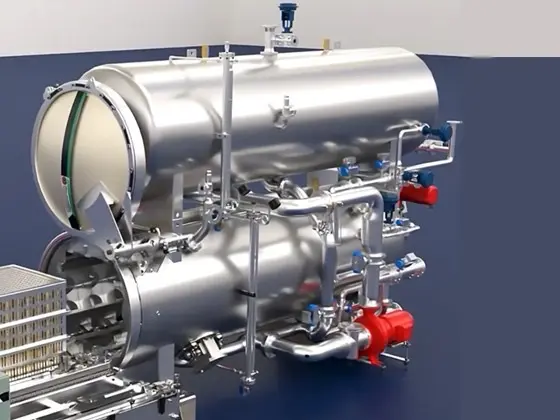
Water immersion is a commonly used retort processing method, where water is first heated in a storage vessel and then transferred into the processing vessel for thermal processing. The container is typically fully immersed in water during processing, with overpressure created by blowing air or steam for improved heat transfer patterns. But, in certain situations, such as with half‐immersion, where the containers are only partially immersed in water (less than half). This will be beneficial for high rotational speeds, as the cage creates less turbulence.
Water is recirculated by using a circulation pump during the heating process to ensure uniform heat distribution throughout the retort. It is to be noted that poor circulation can result in insufficient heat transfer.
Controlling the float of packages can be a challenge, and containers like pouches and trays have often impeded this process, increasing basket manufacturing costs and reducing adaptability. Half‐immersion method is when the the processing vessel is half‐filled with water such that part of the rotation occurs in and out of the water. This method is beneficial for higher rotational speeds because the basket creates less turbulence.
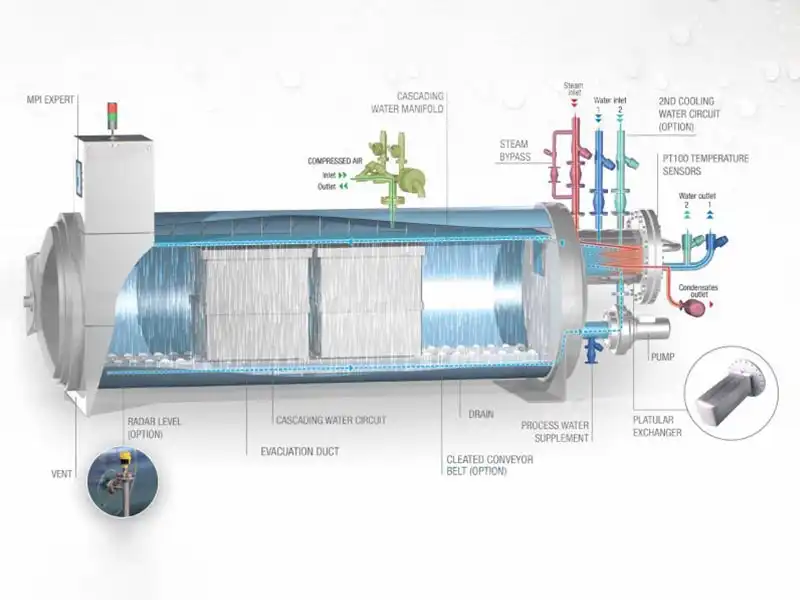
The water cascade retort, also known as a water shower retort system, operates by showering process water over the retort baskets. Process water is drawn from the retort’s base, indirectly heated via an external heat exchanger, and then redistributed at the retort’s top. This water flows across a perforated distribution plate, cascading down onto the product baskets. The plate’s dimensions typically match the combined length of a full load of baskets. Precise hole size and number in this plate are crucial for even water distribution. Most systems utilize retort baskets with solid vertical sides to channel water flow. The water level is maintained below the baskets’ bottoms, and the perforated basket bottoms are designed to allow unrestricted water outflow.
A water cascade retort, while offering advantages like even heat distribution and potential for processing delicate containers, has disadvantages including the need for a pressurized water supply, potential for uneven water flow, and increased complexity in design and maintenance compared to other retort types.
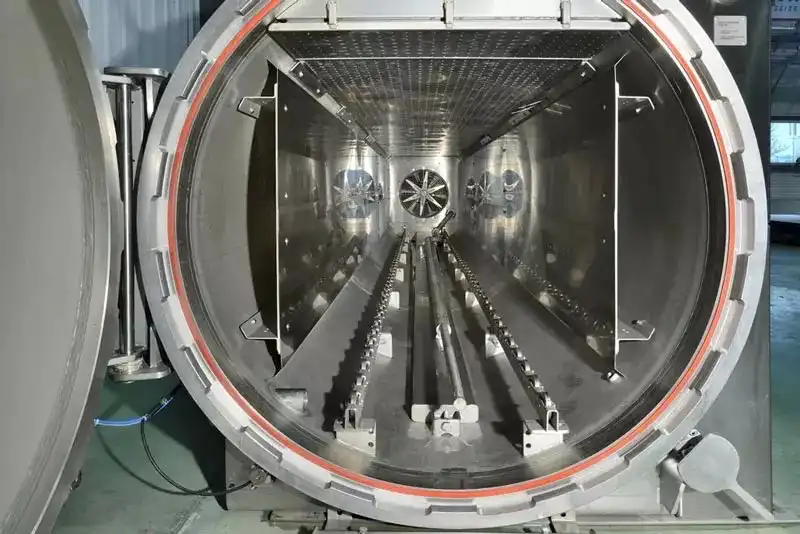
Steam and air thermal processing is a widely used method. Unlike steam retorting, this process utilizes a horizontal vessel with quick-opening doors for efficient loading and unloading, forced steam circulation, and independent temperature and pressure control. Continuous steam and air injection creates a homogenous mixture within the retort vessel. The combination of water and steam pressurizes the retort, leading to overpressure and continuous venting. This constant flow of heated steam eliminates cold spots. While initially developed for flexible and semi-rigid containers, such as military rations, this technique is now employed for pouches and ready-to-eat foods.
Retort design dictates airflow: positive-flow retorts generate upward flow in vertical retorts, while horizontal retorts utilize horizontal flow. Comparative studies show minimal difference in overall mean heating rate index between positive and horizontal flow retorts.
The most commonly used steam/air models have a single high-speed fan mounted at the loading end of the sterilizer. In these retorts, the steam/air mixture is pulled toward the fan and then forced back to the opposite end of the retort shell behind solid baffles shrouding the lateral sides of the retort baskets. Once the mixture reaches the end of the shell opposite the fan, the domed endcap forces the steam/air back through the retort baskets toward the fan. In these retorts, the flow of the steam/air heating medium is parallel to the top and bottom of the retort shell.
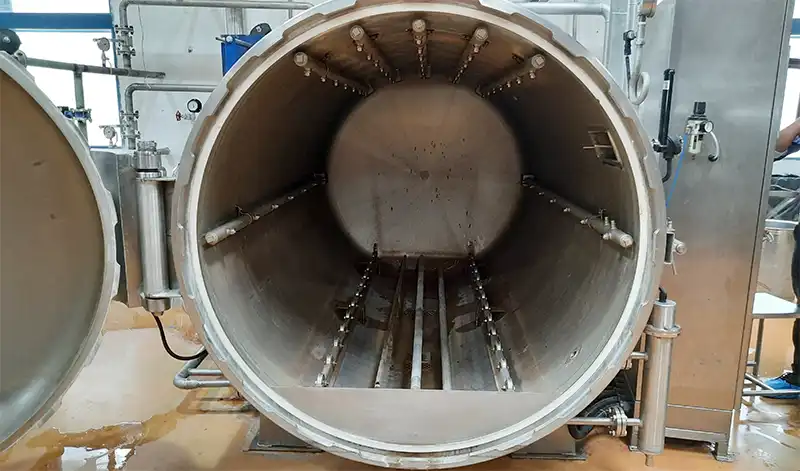
Here the steam is directly injected in the bottom of the retort for fast and uniform come-up. Water spray bars running over the entire shell length along the sides and top of the retort intensely mixes the steam and water and create a homogeneous temperature distribution that results in a uniform thermal process throughout the retort sterilizer. Steam water spray sterilizer offers superior temperature distribution efficacy during the crucial come-up (Heating) phase, achieved by atomizing water or steam onto containers for even heat distribution. However, several critical factors must be considered.
Optimal atomization, vital for uniform heating, necessitates precise nozzle pressure regulation on each nozzle. This requires diligent monitoring and control.
Flexible packages, such as plastic trays and pouches, present a unique challenge known as the “umbrella effect.” During come-up and sterilization stages, these containers can be shielded from the atomized environment due to the containers above them (in the upper retort layers) inhibiting the flow. Even when side sprays are employed, achieving good penetration to the centre of the retort tray can be challenging, especially if the layers of trays or pouches are tightly packed.
Maintaining spray nozzles is critically important. Ensuring nozzles remain free of scale and particulates is essential for process efficacy. However, resolving nozzle blockages can be complex, frequently necessitating retort entry for physical nozzle removal.
Choosing the right retorting system is crucial for ensuring the safety and quality of packaged food products. As you navigate this decision-making process, several factors warrant careful consideration, starting with thermal processing requirements. Different products necessitate varying levels of heat treatment to achieve the desired level of microbial safety. Understanding the specific thermal processes—such as steam, water immersion, or pressure cooking—necessary for your product is essential. Each method presents unique advantages and is best suited to particular types of containers, thus impacting the overall system selection.
Another important aspect to evaluate is package integrity. The selected retorting system must effectively maintain the physical and thermal integrity of your containers during the processing period. For example, glass, metal, and flexible pouches all respond differently to heat and pressure. Ensuring that the chosen system minimizes risks such as deformation or leakage is critical to maintaining product quality and prolonging shelf life. Therefore, a careful assessment of your packaging materials in conjunction with the retorting technology is vital for ensuring optimal results.
Furthermore, processing efficiency plays a significant role in the selection of a retorting system. Productivity can be influenced by several factors, including cycle times, energy consumption, and maintenance needs. It is advisable to consider automated systems that can streamline operations and reduce labor costs while enhancing processing speed. Evaluating the total cost of ownership, which includes initial investment, operating costs, and potential downtime, can aid in making the most economically viable decision.
Ultimately, the process of selecting the best retorting system should involve a thorough analysis of your specific products and packaging requirements. By carefully weighing thermal processing needs, package integrity, and processing efficiencies, you will be better equipped to make an informed choice that meets your operational goals and enhances overall product safety.

Comprehensive Solutions for Qualification and Validation in Retort Sterilization Retort sterilization is a fundamental process in the food processing industry,...
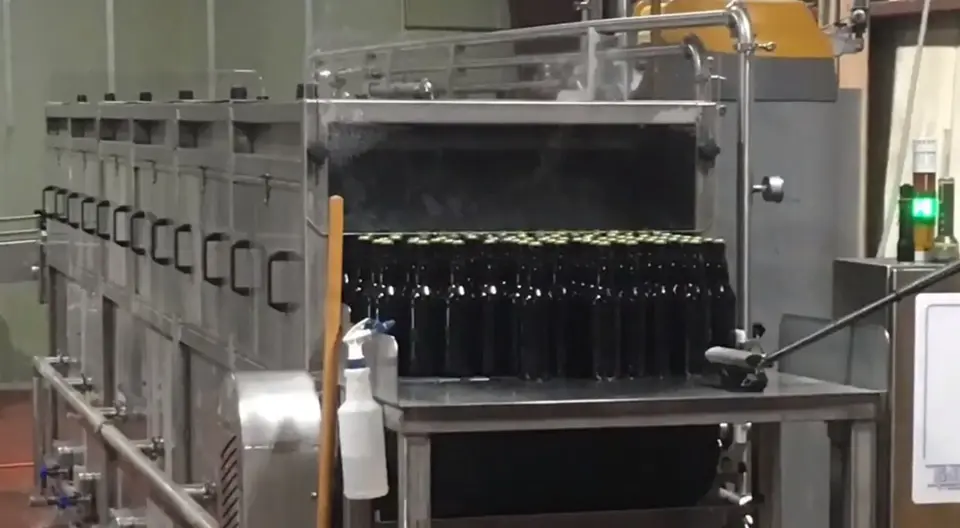
Complete Solutions for Qualification and Validation of Pasteurization Tunnels Pasteurization tunnels are key components in the food and beverage processing...
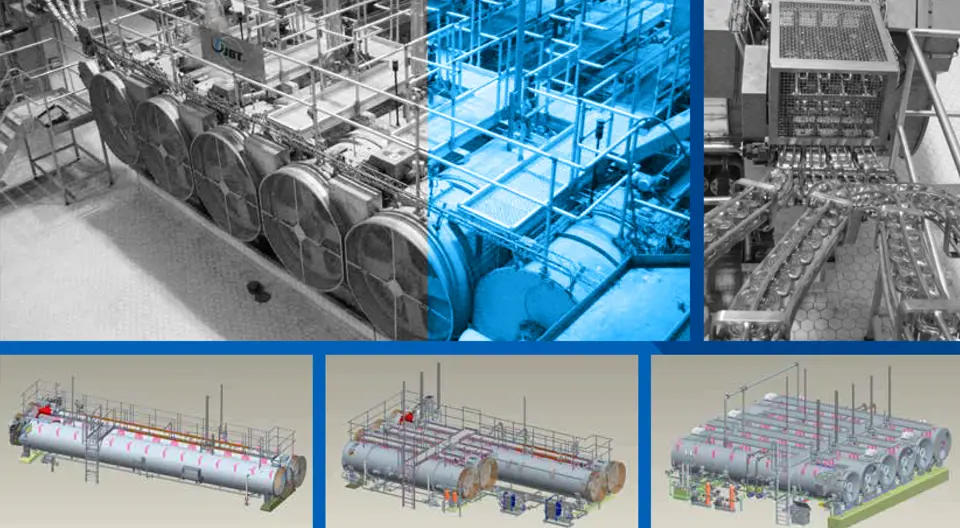
Complete Solutions for Cooker Cooler Qualification and Validation Cooker cooler qualification and validation often require tailored solutions to ensure complete...
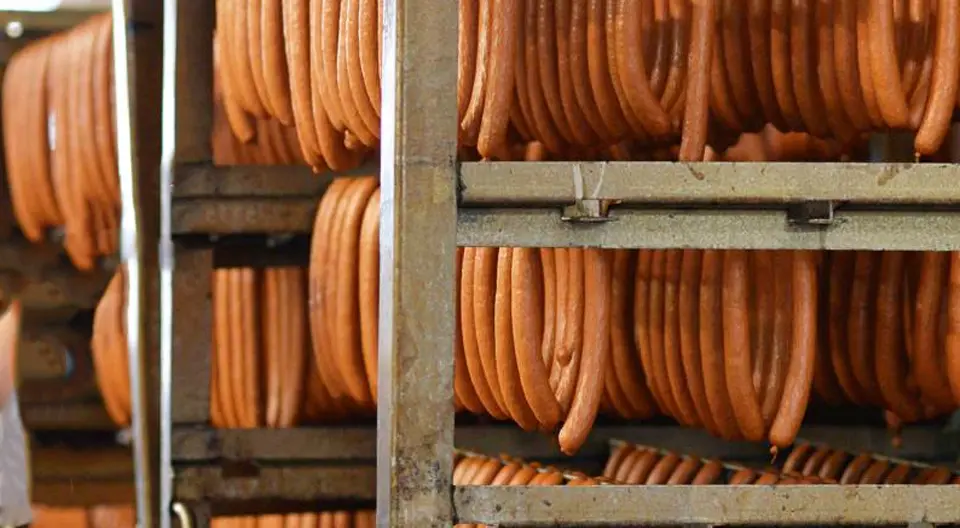
Complete Solutions for Smoke House Qualification and Validation In the realm of food processing and preservation, smoke houses play a...
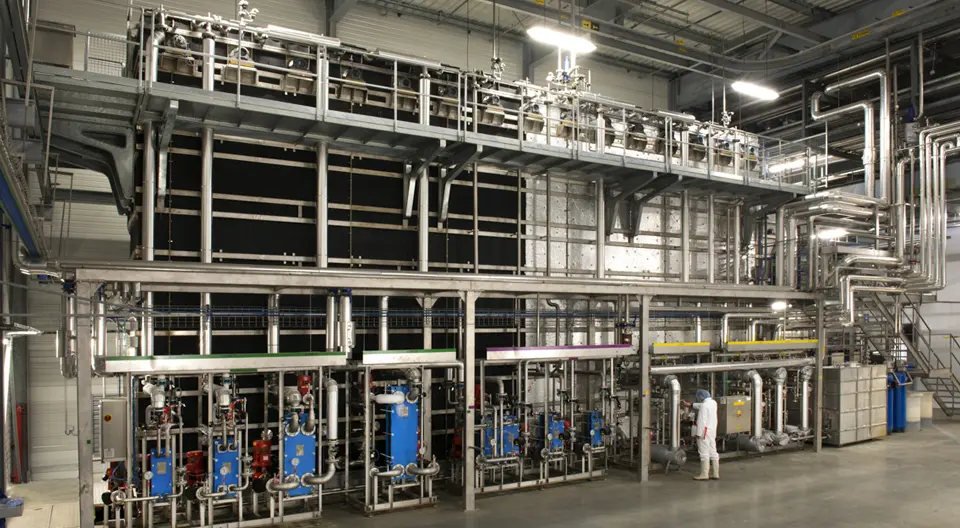
Complete Solutions for Hydrostatiс Retort Qualification and Validation Hydrostatic retorts are essential devices utilized primarily in the food processing and...

Choosing the Right Retorting System for Your Containers and Products Retorting systems play a pivotal role in the food packaging...
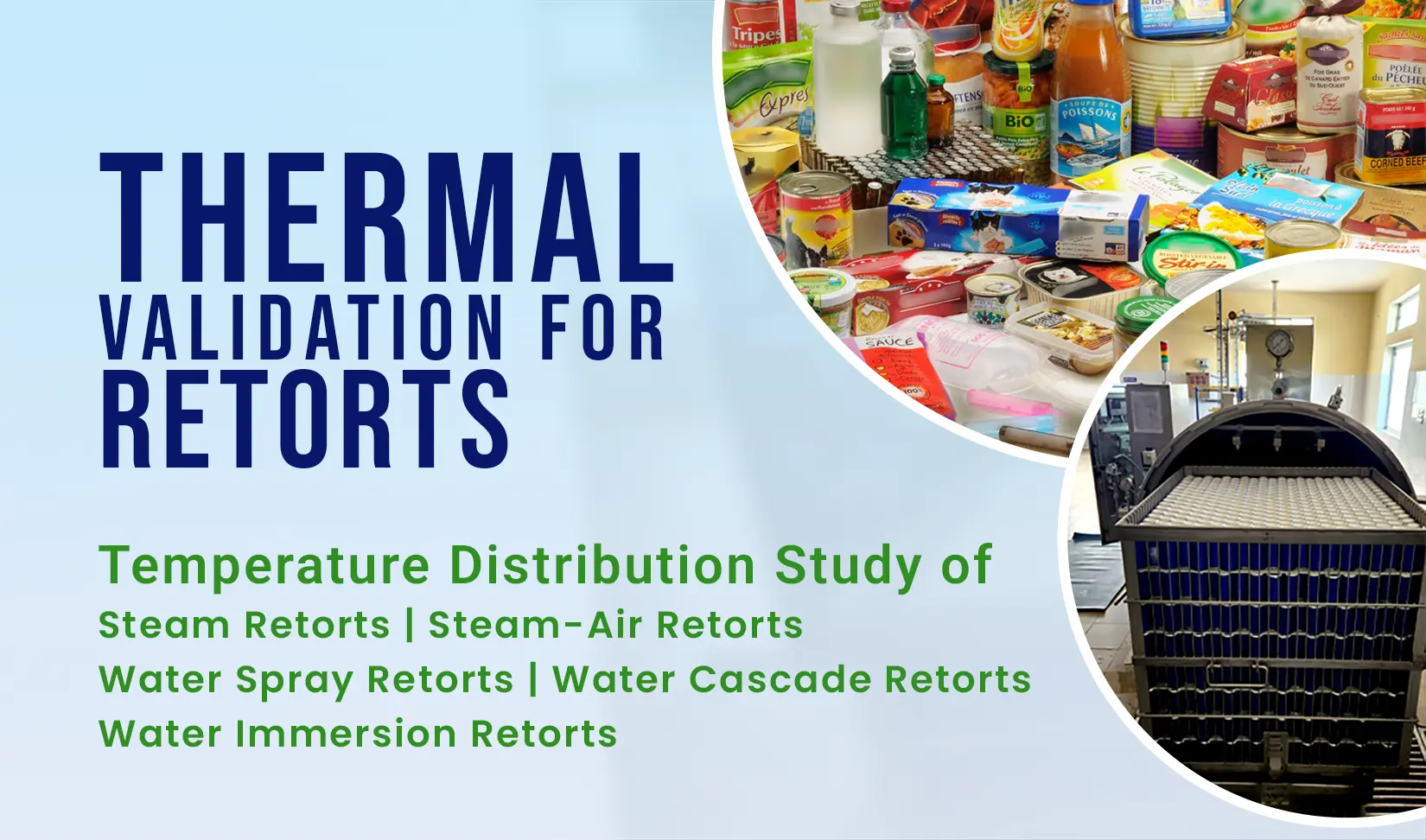
Thermal validation is a crucial aspect of food processing that involves determining the effectiveness of heat treatment methods, particularly in...

In-Container Sterilization – Ensuring Commercial Sterilization Through Critical Factors as per USFDA Guidelines Introduction:The term “Commercial Sterilization” refers to a...
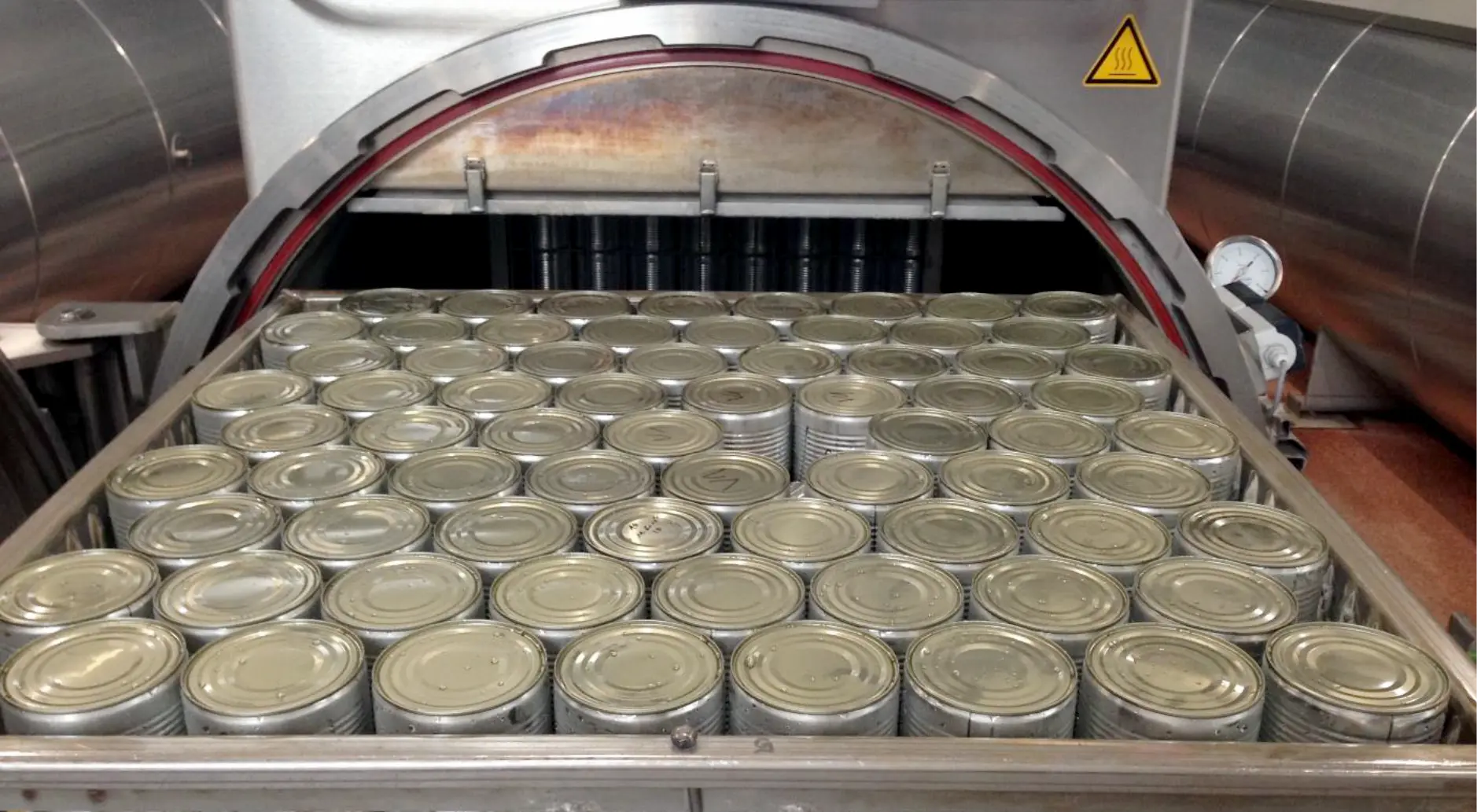
Ultimate Challenge in Retort Process: Finding the Balance between Food Safety & Quality For low-acid foods packed in the hermetically...
At TST, we offer advanced process authority and validation services in support of thermally processed shelf-stable food products. Our teams are industry experts and come well-equipped with industry-leading thermal validation equipment